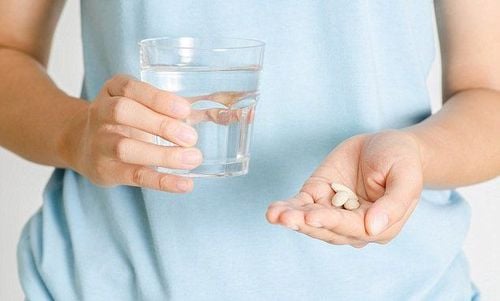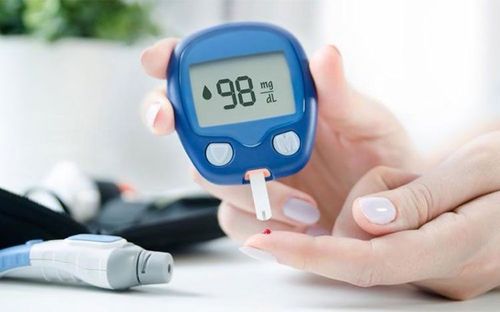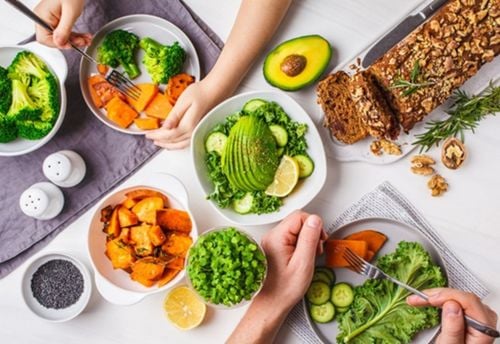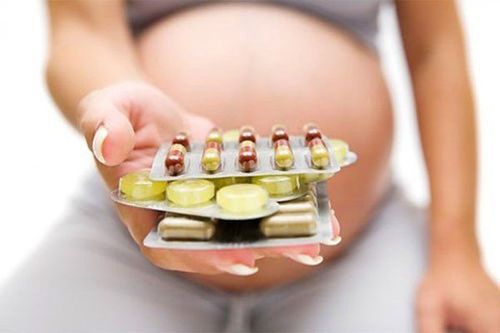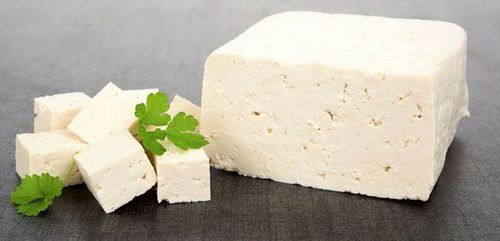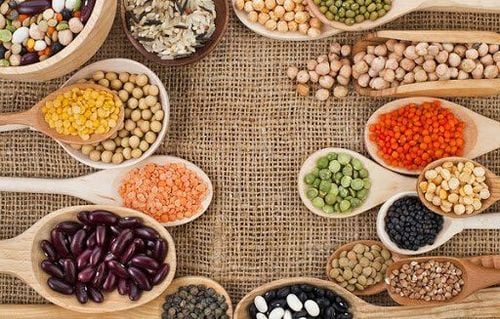This is an automatically translated article.
Beans contain many excellent nutrients such as fiber, protein and B vitamins. They belong to the Fabaceae plant family, which is what sets them apart from other fruits and seeds. Beans offer a wide range of nutrients that are high in potential health benefits. Some of the potential benefits they provide include: lowering cholesterol; reduced blood sugar; provide protein for energy. Below, we discuss the 9 healthiest beans for your meals.
1. Benefits of legumes
Beans contain amino acids, which are compounds that make up proteins that the body uses to heal and create new tissues, such as bones, muscles, hair, skin, and blood. Protein is an essential nutrient. There are many types of beans that are used in many forms such as dried beans, canned beans, .... Dried beans when used, we need to cook them soft to eat and add flavors to create delicious dishes. . Canned and frozen beans are easy to use just reheat on the stovetop or in the microwave. Some of the most common bean varieties include: peas, black beans, black-eyed peas, soybeans, garbanzo beans, navy beans, and kidney beans.Beans contain many nutrients such as protein, fiber, vitamins and minerals...Protein is an important nutrient that plays an important role in maintaining and repairing the body. Beans contain quite a lot of amino acids, compounds that make up proteins. There are 20 types of amino acids. There are many other important nutrients found in beans, the first of which is folate. Folate is great for overall health, contributes to the creation of healthy red blood cells, and helps prevent neural tube defects during pregnancy. Beans are rich in polyphenols, a type of antioxidant. Antioxidants counteract the harmful effects of the body in generated during metabolism and other processes. Free radicals can cause damage to body cells leading to various diseases. Antioxidants are extremely good compounds that help eliminate free radicals.
People who eat beans regularly may have less other cardiovascular problems. So doctors also recommend that people replace higher-fat animal proteins with legumes. In addition, beans are also high in fiber, which can help reduce the risk of metabolic cardiovascular disease. Several studies have demonstrated that beans act as antioxidants and anti-inflammatory agents. Stabilizing blood sugar is another benefit of beans.
Beans also help control appetite, and the fiber and healthy carbs in them can help create feelings of fullness and satisfaction. A study by Trusted Source has shown that many types of beans, especially black beans, help improve intestinal barrier function and increase the number of beneficial bacteria in the gut. This contributes to the prevention of intestinal-related diseases. The beneficial bacteria in the gut fortify immune system function and may promote weight loss.
2. 9 types of beans that are the healthiest for the body
Beans and other legume taxa are the fruits or seeds of a plant family called Fabaceae. They have been widely eaten around the world for thousands of years and are a rich source of fiber and B vitamins. Legumes are also a great alternative to meat as a source of protein in a vegetarian diet. Beans and legumes also contribute to lower cholesterol, lower blood sugar and increase healthy gut bacteria. Here are nine types of beans and healthy beans that we can use every day.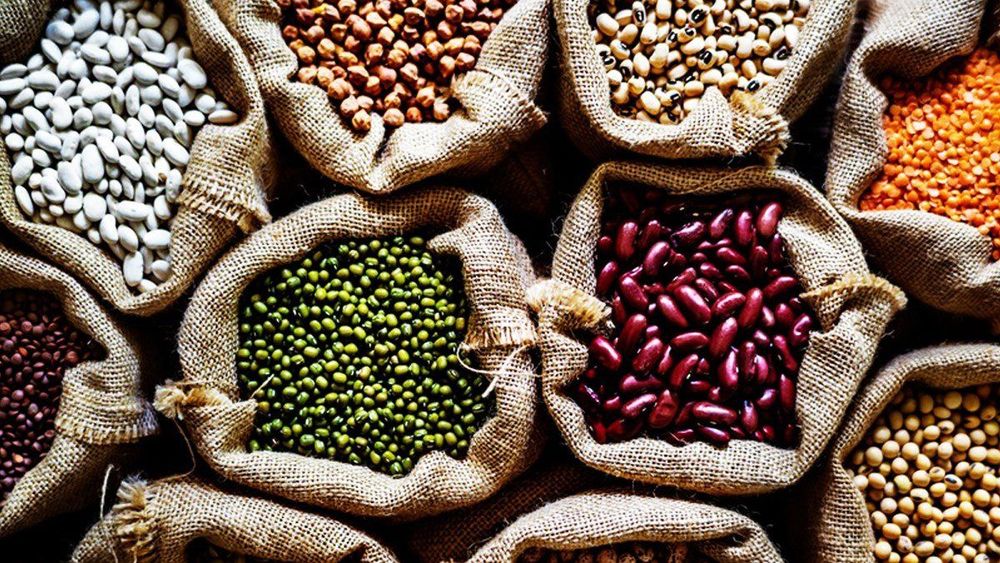
Ăn đậu đem lại nguồn dinh dưỡng cho người sử dụng
2.1. Chickpeas Another name is garbanzo beans, chickpeas contain a lot of fiber and protein. Many scientific studies prove that eating beans and legumes like chickpeas can help with weight loss, reduce risk factors for heart disease and even cancer risk, recommended as a meat substitute. Red on the menu
One cup (164 grams) of cooked chickpeas provides:
Calories: 269 Protein: 14.5 grams Fiber: 12.5 grams Folate (vitamin B9): 71% RDI Manga : 84% RDI Copper: 29% RDI Iron : 26% RDI Chickpeas also contribute to lower blood sugar and increased insulin sensitivity when weighed against other carb-rich foods. In a study of 19 women, the group that ate a meal containing 1.7 ounces (50 grams) of chickpeas had significantly lower blood sugar and insulin levels than the group that ate the same amount of bread. white or other wheat-containing foods. Eating chickpeas is also a form of improving blood cholesterol levels. Many studies have shown that chickpeas contribute to a reduction in both total cholesterol and low-density lipoprotein "bad" cholesterol (LDL cholesterol), which contributes to the risk of cardiovascular disease. Our gut and the beneficial bacteria within it play an important role in many aspects of our health, so foods that contain fiber are very beneficial for the gut. As such, chickpeas are an excellent source of fiber and folate, and they're also low in calories. Prominent effects are helping to lower blood sugar, lower blood cholesterol and improve gut health.
2.2. Lentils Lentils are a great source of vegetarian protein and a great addition to soups and stews. They have some obvious health benefits. One cup (198 grams) of cooked lentils includes:
Calories: 230 Protein: 17.9 grams Fiber: 15.6 grams Folate (vitamin B9): 90% RDI Manganese: 49% RDI Copper: 29 % RDI Thiamine (vitamin B1): 22% RDI Similar to chickpeas, lentils are also effective in reducing blood sugar. A study of 3,000 people found that those who ate the most lentils and other legumes had the lowest rates of diabetes of any group. These benefits are attributed to the effects of lentils on the gut. Many studies have shown that lentils improve bowel function and slow down the digestive rate of the stomach, which is very beneficial for gut health and prevents blood sugar spikes. Finally, lentil sprouts also have many heart-healthy benefits by lowering “bad” LDL cholesterol and increasing “good” HDL cholesterol. Lentils are actually a great source of vegetarian protein and may lower blood sugar more than some other foods high in carbohydrates.
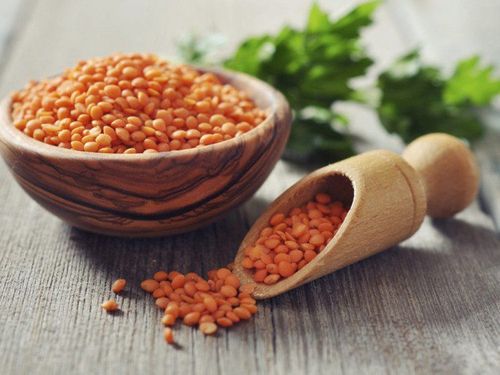
Bạn có thể ăn đậu lăng giúp giảm lượng đường trong máu
2.3. Peas Peas are also a legume and there are many different varieties of peas that are bred. One cup (160 grams) of cooked peas contains:
Calories: 125 Protein: 8.2 grams Fiber: 8.8 grams Folate (vitamin B9): 24% RDI Manganese: 22% RDI Vitamin K : 48% of the RDI Thiamine (vitamin B1): 30% of the RDI Peas are rich in fiber and protein. Many studies have shown that the fiber and protein in peas, taken as a supplement, offers many health benefits. A study of 23 overweight people found that eating 1.8 ounces (50 grams) of bean flour per day for 28 days significantly reduced insulin resistance and belly fat compared to whole wheat flour.
A few other studies show that pea flour and fiber in peas help reduce the rise in insulin and blood sugar after meals, lower blood triglycerides and make us feel fuller. Because fiber supplies healthy bacteria to your gut, pea fiber can also improve gut health. One study found that pea fiber could increase stool frequency in the elderly and limit the need for laxatives. This can also help grow beneficial bacteria in the gut, such as Lactobacilli and Bifidobacteria. These two types of bacteria produce short-chain, polar fatty acids that are beneficial for gut health. As such, peas are an excellent source of fiber and protein, which can help lower blood sugar and insulin resistance. The fiber and protein found in beans contribute to a healthy gut.
2.4. Kidney beans Kidney beans, also known as kidney beans, are one of the most commonly consumed beans and are often eaten with rice. Kidney beans have certain health benefits. One cup (256 grams) of cooked kidney beans contains the following:
Calories: 215 Protein: 13.4 grams Fiber: 13.6 grams Folate (vitamin B9): 23% RDI Manganese: 22% RDI Thiamine ( vitamin B1): 20% RDI Copper: 17% RDI Iron: 17% RDI
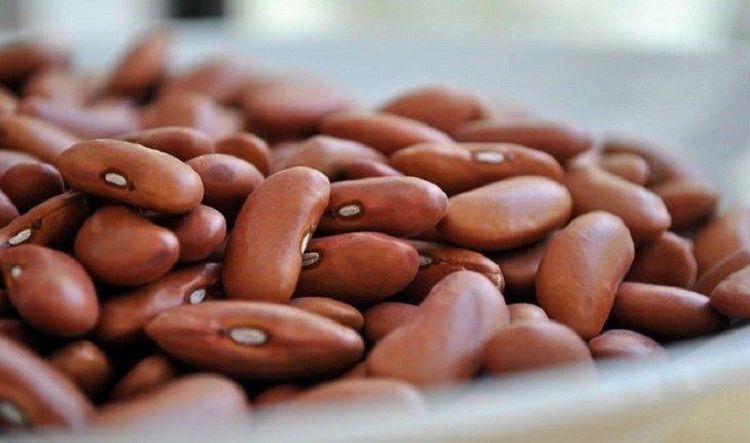
Ăn đậu thận với cơm rất tốt cho sức khỏe con người
Kidney beans are extremely rich in fiber, or kidney beans, it helps slow down the body's absorption of sugar into the bloodstream and thereby lower blood sugar levels. According to a study on a sample of 17 people with type 2 diabetes, eating beans with rice significantly reduced blood sugar levels compared to eating rice alone, after a meal. High blood sugar and weight gain are two risk factors for diabetes and metabolic syndrome, and kidney beans themselves have the potential to reduce the risk factors. One study has shown that white kidney bean extract can help reduce body weight and fat mass. The study selected a group of thirty overweight men and women who used the supplement. over 30 days lost an average of 5.5 pounds (2.5 kg) more weight and fat mass and waist circumference than the placebo group. As such, kidney beans are high in fiber and can help reduce blood sugar spikes after a meal.
2.5. Black beans Black beans are foods rich in fiber, protein and folate. Black beans are a staple food in Central and South America. One cup (172 grams) of cooked black beans has the following nutrients:
Calories: 227 Protein: 15.2 grams Fiber: 15 grams Folate (vitamin B9): 64% RDI Manganese: 38% RDI Magnesium: 30% RDI Thiamine (vitamin B1): 28% of the RDI Iron: 20% of the RDI Black beans help reduce blood sugar spikes that occur after eating, and may also help reduce the risk of diabetes and weight gain. Because black beans have a lower glycemic index than other high-carbohydrate foods. This means they lower blood sugar levels after meals. Some studies suggest that people who eat black beans in combination with rice and black beans can reduce blood sugar spikes compared to eating rice alone. Blood sugar spikes are lower when eating black beans compared to bread. As such, black beans are more effective at lowering blood sugar levels after meals than other high-carb foods, such as rice and bread.
2.6. Soy Beans Soybeans are a popular food in Asia and come in different forms, including tofu. Soybeans offer a variety of health benefits. One cup (172 grams) of cooked soybeans includes:
Calories: 298 Protein: 28.6 grams Fiber: 10.3 grams Manganese: 71% RDI Iron: 49% RDI Phosphorus: 42% RDI Vitamin K: 41% of the RDI Riboflavin (vitamin B2): 29% of the RDI Folate (vitamin B9): 23% of the RDI In addition to these nutrients, soybeans contain high levels of antioxidants called isoflavones, which are responsible for many of these nutrients. their health benefits. Much evidence shows that consuming soybeans and their isoflavones is effective in reducing the risk of cancer. However, many of these studies were observational, meaning that the participants' diets were not controlled, so other factors also influence cancer risk.
One large study that combined the results of 21 other studies found that a high intake of soy was associated with a 15% reduced risk of stomach cancer or other types of gastrointestinal cancer. Another study showed similar results for breast cancer. However, this result is smaller and less obvious. Much of this benefit can be attributed to the fact that the isoflavones in soy are phytoestrogens. Proven that they can mimic the effects of estrogen in the body, which declines during menopause. One large study of 403 premenopausal women found that two years of soy isoflavones supplementation, along with calcium and vitamin D, significantly reduced bone density imbalances that occur during menopause. terrible. The protein and phytoestrogens in soy can also help significantly reduce risk factors for cardiovascular disease, including blood pressure and blood cholesterol.
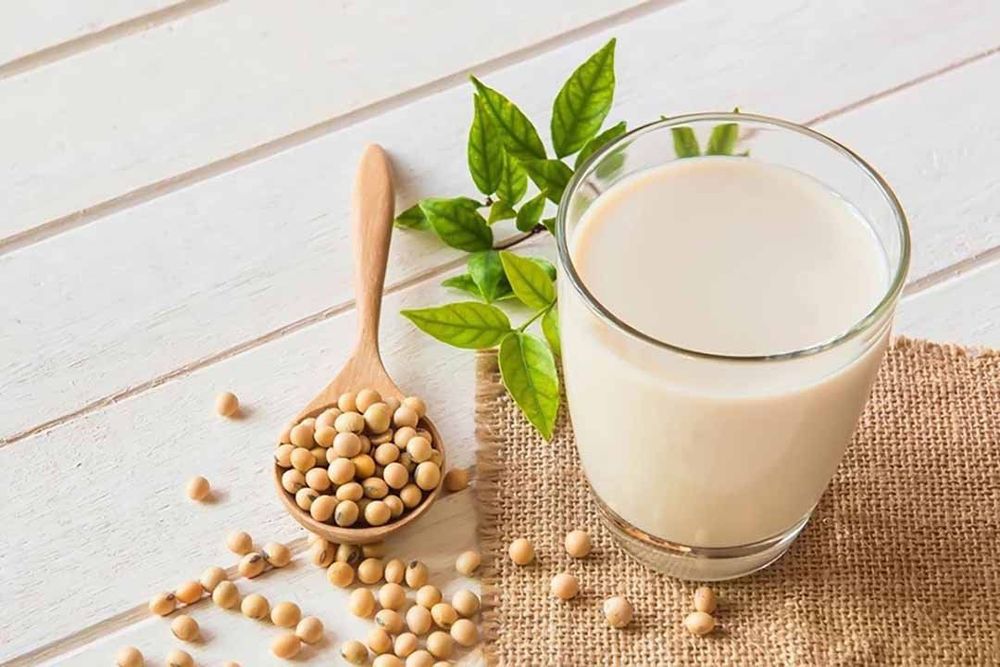
Ăn đậu nành mang lại nhiều lợi ích cho sức khỏe
2.7. Pinto Beans Pinto beans are extremely popular in Mexico. They are usually consumed as whole beans, or mashed and fried. Nutrition in one cup (171 grams) of cooked pinto beans:
Calories: 245 Protein: 15.4 grams Fiber: 15.4 grams Folate (vitamin B9): 74% RDI Manganese: 39% RDI Copper: 29% of the RDI Thiamine (vitamin B1): 22% of the RDI Pinto beans contribute to lower blood cholesterol levels. One study in 16 people found that eating 1/2 cup of pinto beans daily for 8 weeks significantly reduced both total cholesterol and “bad” LDL cholesterol in the blood. Another study found that pinto beans were beneficial for lowering LDL cholesterol as well as increasing the production of propionate, a short-chain fatty acid produced by gut bacteria. Propionate is great for gut health. Like many other beans, pinto beans also help blood sugar occur after eating a
2.8 meal. Navy beans Navy beans, also known as apricot beans, contain excellent amounts of fiber, B vitamins, and minerals. One cup (182 grams) of cooked navy beans includes:
Calories: 255 Protein: 15.0 grams Fiber: 19.1 grams Folate (vitamin B9): 64% RDI Manganese: 48% RDI Thiamine (vitamin B1) ): 29% of the RDI Magnesium: 24% of the RDI Iron: 24% of the RDI Navy beans help reduce symptoms of metabolic syndrome, largely due to their high fiber content. An interesting study with 38 children with abnormal blood cholesterol found that those who ate a muffin or smoothie containing 17.5 grams of chickpea flour daily for four weeks had healthy HDL cholesterol levels. stronger than other groups. In adults, similar results were obtained. One study in overweight and obese adults found that eating 5 cups (910 grams) of navy beans and other legumes per week had major benefits for reducing waist circumference, blood sugar, and blood pressure.
2.9. Peanuts Peanuts belong to the legume family, which sets them apart from other nuts. Peanuts are rich in monounsaturated fats, polyunsaturated fats, protein and B vitamins. Half a cup (73 grams) of peanuts includes:
Calories: 427 Protein: 17.3 grams Fiber: 5.9 grams Saturated Fat: 5 grams Manganese: 76% RDI Niacin: 50% RDI Magnesium: 32% RDI Folate (vitamin B9): 27% RDI Vitamin E: 25% RDI Thiamine (vitamin B1): 22% RDI
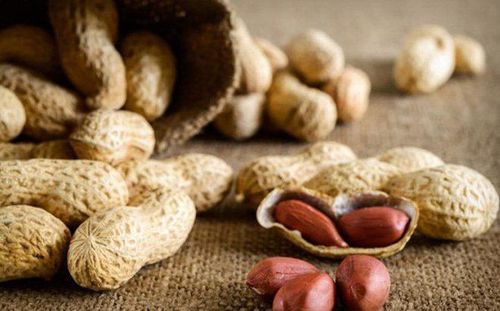
Ăn đậu phộng giàu chất béo không bão hòa tốt cho cơ thể
Peanuts contain a lot of monounsaturated fat, if replaced with some other ingredients in the diet, it will be very beneficial for health. Several studies have shown that peanut consumption contributes to a lower risk of death from various causes, including heart disease, stroke, cancer, and diabetes. Interestingly, peanut butter did not have the same effect. However, these studies are observational, which means that eating peanuts cannot actually reduce these risks.
Other studies have tested the effects on blood cholesterol levels of eating peanuts. A study in women with high blood cholesterol found that the group that ate peanuts as part of a low-fat diet for six months had lower total cholesterol and lower "bad" LDL cholesterol compared to the group that ate peanuts as part of a low-fat diet for six months. with the standard low-fat diet group. However, there are some people who are sensitive to salt, and recommend choosing unsalted peanuts over salted ones.
Thus, beans are a very good source of food for the body, we can use beans to provide nutrients such as fiber, vitamins,... Especially the protein in beans is very good for the heart system. blood vessels and our health, it can replace animal protein such as red meat to reduce cholesterol and other components harmful to health.
Please dial HOTLINE for more information or register for an appointment HERE. Download MyVinmec app to make appointments faster and to manage your bookings easily.
Reference sources: healthline.com, medicalnewstoday.com



